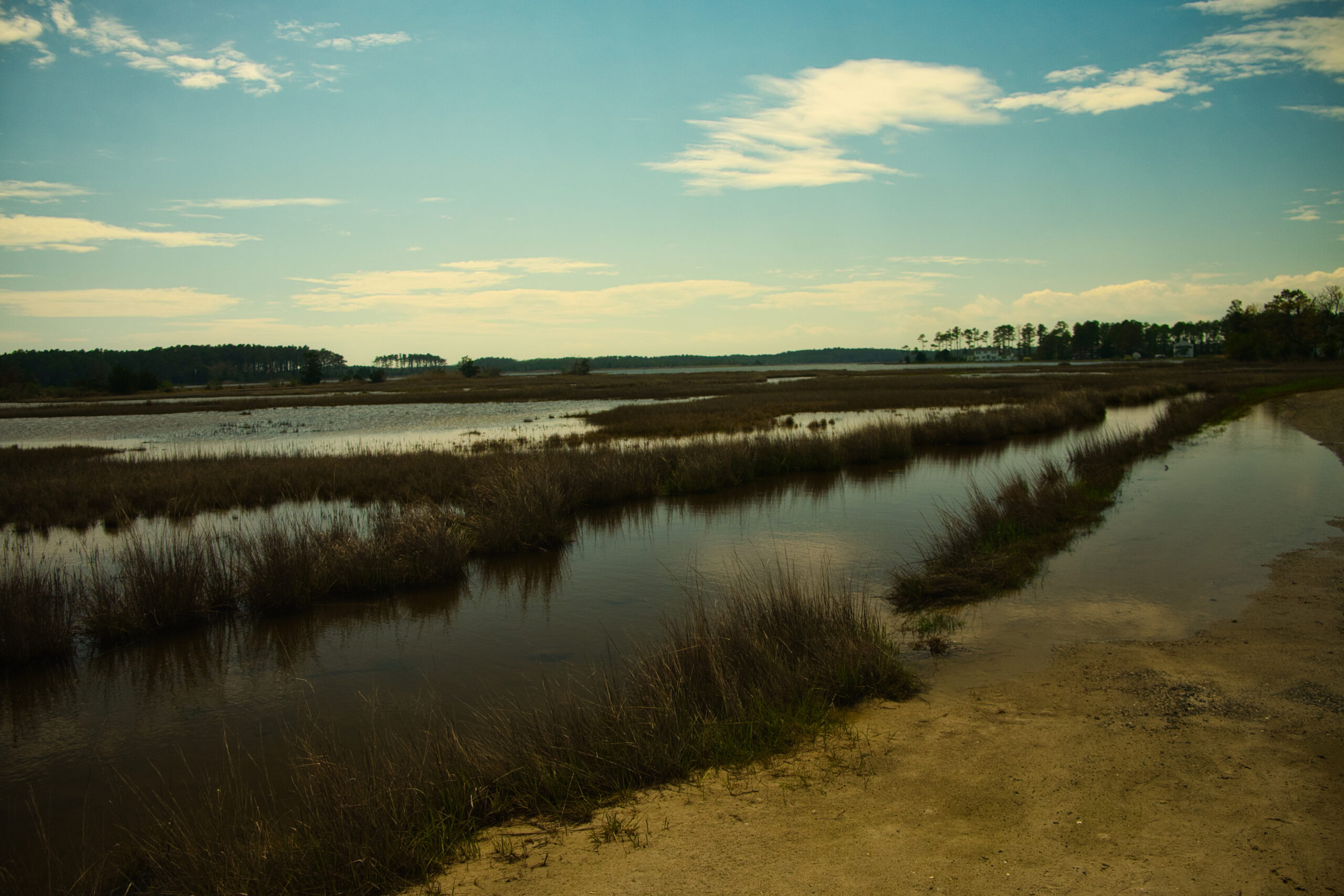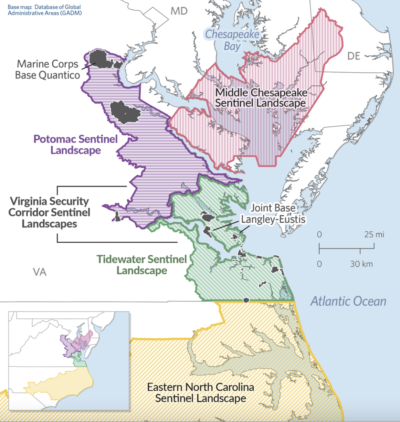Virginia Security Corridor Project Underway

Mathews County Haven Beach Marsh. Photo by John Bragg.
What is the Virginia Security Corridor?

Map of Sentinel Landscapes across Virginia into North Carolina. Photo by The Pew Charitable Trusts.
The newly established Virginia Security Corridor was made to increase military preparedness, strengthen climate resilience, and support working lands while conserving natural resources. The corridor is comprised of two recently designated Sentinel Landscapes – the Potomac and Tidewater Sentinel Landscapes. These areas now connect two previous sentinel landscapes in the Chesapeake and North Carolina, thus creating a large swath of land crucial to conservation and military efforts.
Conservation has become a military interest in recent years, with sea level rise, flooding, and climate-induced weather hazards threatening coastal military bases. Designating new sentinel landscapes that include forested areas protects military bases as trees and marshes are able to absorb much of the water and impact of climate events.
So what is a sentinel landscape? These are regions where priorities regarding military defense, working lands, and environmental conservation all intersect. More broadly, the Sentinel Landscapes Partnership is “a coalition of federal agencies, state and local governments, and non-governmental organizations that work with willing landowners and land managers to advance sustainable land use practices around military installations and ranges.”
How does this benefit the environment?
The creation of new sentinel landscapes, which account for 2.9 million acres of land and water, marks an “important step to creating a collaborative strategy to support private landowners with technical and financial resources that align with their stewardship goals” says the State Forester at the Virginia Department of Forestry Rob Farrell. In addition to the military benefits of securing this coastal region, the Virginia Security Corridor project boasts various environmental impacts:
Improved forest management and carbon sequestration
The Virginia Department of Forestry is the primary state agency encouraging the preservation of privately owned forests and also restoration of areas that have been degraded. They also support sustainable management of forest resources through responsible logging practices that maintain biodiversity and allow for regeneration. Landowners are also able to increase their carbon sequestration by planting new trees and maintaining current forest resources on their property.
Improved water quality
The areas are now subject to better water management which will decrease unchecked pollution flowing into coastal waters. Preserving wetlands and natural vegetation will also decrease erosion which can maintain water quality. Additionally, collaborating with land owners on agricultural practices can decrease harmful runoff which would otherwise contaminate waters.
Preserving biodiversity and increasing ecological resilience
The project will help increase the resiliency of native bird species that have been threatened by habitat loss and climate change by protecting their ecosystems. The new security corridor will accomplish this not only on military bases but all along coastal Virginia, protecting wildlife from urban sprawl and safeguarding the resources necessary for their survival.
VCN Partners Collaborate with Sentinel Landscapes
In addition to the state agencies who worked on this project, many VCN Partners helped ensure the success of environmental efforts in the Virginia Security Corridor including:
- American Battlefield Trust
- Capital Region Land Conservancy
- Friends of the Lower Appomattox
- Friends of the Rappahannock
- Northern Virginia Conservation Trust
- Piedmont Environmental Council
- Prince William Conservation Alliance
- Black Family Land Trust
- Chesapeake Bay Foundation
- The Conservation Fund
- The Nature Conservancy
- Pew Charitable Trusts
- Virginia Environmental Endowment
- Trust for Public Land
- VA Association of Soil & Water Districts
- Virginia’s United Land Trusts
